To quote the late, great Yogi Berra, “It’s like déjà vu all over again.” As we enter the summer of 2022, we are still dealing with the issues we had over the past two years. COVID-19 case counts are rising again across the U.S. due to a rise. At the time of this writing, the seven-day average of daily new coronavirus cases has risen to above 100,000 – more than three times higher than one year ago, according to the Centers for Disease Control and Prevention (CDC).
We likely see more infections that are not officially recorded. Jeffrey Shaman, an infectious disease specialist at Columbia University, released research showing that at the end of 2020, only one in four coronavirus cases were reflected in official counts. During the Omicron surge, the number was closer to one in six. Based on his models and the availability of at-home tests, Shaman suspects the U.S. could be closer to 800,000 new cases daily. Even more staggering, a recent survey from New York suggests that COVID-19 cases could be undercounted by a factor of 30! To make matters worse, it’s apparent that multiple vaccinations and/or prior infections with COVID-19 do not preclude repeat infection.
Even in the face of rising cases, few COVID-19 precautions are mandated anywhere in the country, especially in the workplace. Despite regulations by the Occupational Safety and Health Administration (OSHA) and the CDC’s comprehensive Workplace Prevention Strategies, most businesses have taken a somewhat lackadaisical approach to ensure worker safety. So much so that as of May 20, 2022, OSHA has received tens of thousands of COVID-19-related workplace safety complaints and has levied initial penalties of $7,161,428 on businesses.
This has businesses, still reeling from the volatility of the past two-and-a-half years, bracing for the unknown. As a result, I’ve spoken with numerous business leaders over the past two years about how they can safeguard their businesses (and their bottom lines) from pandemic-related problems, supply chain issues, and potential economic downturns.
In the face of this uncertainty, I’ve been offering one critical piece of advice – reevaluate how your company works. Organizational operating models are changing. In this time of great upheaval, the old way of doing business is no longer working, and the businesses that emerge from these challenges successfully will be the ones that can evolve and transform accordingly. This brings me to the flexible work environment.
The media has tended to focus on the benefits of flexible work models as they relate to employees, but what’s becoming more apparent as we progress into the third year of the pandemic is that remote, hybrid, and hub-and-spoke work models can have genuine benefits for employers as well.
A Remote Solution
“The office as we know it is over. It is an anachronistic form factor from a pre-digital age.” These are words spoken by Airbnb’s CEO and Co-Founder Brian Chesky in an interview on May 18, 2022, with The Washington Post as a follow-up to his announcement that all 6,000 of Airbnb’s employees were going remote. Regardless of position or role, everyone was free to live wherever they wanted and travel as they pleased with no cuts in pay for lowered living costs. After he made the announcement, Chesky reported that Airbnb had more than one million people visit their careers and jobs page on their website. This is worth repeating – more than one million people became interested in working for Airbnb…
Parag Agrawal, CEO of Twitter, recently tweeted a notice to the tech giant’s employees that they will have the option to work remotely. In part, the message read, “Wherever you feel most productive and creative is where you will work and that includes working from home full-time forever.” While Twitter’s current operating model can technically be classified as a hybrid since they give their employees the option of returning to an office, businesses like Quora, Basecamp, Muck Rack and Pac-12 have opted to go fully remote for all employees.
Remote work can benefit employees in numerous ways, including – opting to live in a less expensive city, increased flexibility to take care of kids and pets, greater autonomy, improved productivity, and higher job satisfaction. They can also cut costs by spending less on fuel and food. And last but certainly not least, remote workers report having a better work-life balance. As I mentioned above, however, remote work benefits also extend to employers.
In an interview for TechCrunch, Karen Mangia, Vice President of Customer and Market Insight at Salesforce, explained that most assume employers want employees back in the office full-time and employees want to be remote full-time, but that’s not entirely the case. “It’s not a black and white issue and shouldn’t be approached as one.” She went on to add, “And as I started doing a bunch of research about how do we close this gap between what employers are willing to offer and what employees expect right now, this theme about the power of choice showed up very consistently as a positive and effective technique.”
Flexible work models offer this power of choice to employees and the employers they work for. For example, one benefit Chesky noted during his interview for The Washington Post was the opportunity for a company to recruit from a bigger talent pool. Instead of being limited to hiring people within a 50-mile radius, they can now hire anyone worldwide without relocation costs. On the other hand, job seekers will be more attracted to that business because they can work remotely. Instead of that business competing with other organizations for talent, job seekers will be competing with each other to work for that employer.
In addition to winning the war for talent, the cost savings of going remote can be significant for business. Companies that go remote will save significantly by reducing commercial real estate costs, including rent, utilities, cleaning services, office equipment, office supplies, and insurance.
If you’re doing the math in your head right now, you will likely realize what this could mean for your company’s profit margins. In an article about the benefits of remote work on TheStreet, Dave Rietsema, Founder and CEO of Matchr.com, a leading Human Resources software company, estimates that “Companies can save up to $11,000 per employee in terms of overhead costs if they switch to remote work.” If you employ 6,000 employees like Brian Chesky of Airbnb, that’s a cost savings of 66 million dollars a year!
Hybrid Without The Headaches
We get it. Not all employees can work remotely. In your case, you may need your employees to be in the office occasionally, or you may believe your corporate culture depends on the camaraderie that comes from face-to-face interaction. Perhaps you’re in manufacturing, food service, or one of the many industries that must have onsite employees at least part of the time. If that sounds like you, you’re not alone. According to MarketWatch, Google’s parent company, Alphabet, Facebook’s parent company, Meta, and Apple and Microsoft, are all asking their workers to return to the office a few days out of the week.
Hybrid work has become famous for companies trying to thread the needle between worker demands and company requirements. This experiment is playing out in real-time, and not surprisingly, we’re seeing some hybrid work models that have had a few hiccups. For example, in companies that allow their workers to pick the days they come into the office, workers often find that they chose a day that no one else did. In a moment of irony, these employees work alone at the office instead of at home.
While offices may have been noisy and full of distractions before COVID-19, workers seem to be more affected by this atmosphere due to the years of imposed isolation. While some workers were distracted by kids and pets while working from home, others felt they couldn’t get any work done at the office. A recent Clockify blog post cited studies that show that as high as 70% to 90% of employees feel distracted at the office, with up to 56 disruptions counted during the day. The same studies show that it can take almost two hours for an employee to refocus their attention after suffering a distraction.
Employees may feel unproductive as well as uncomfortable in unfamiliar surroundings. After creating a comfortable workstation at home, many workers have to cart peripherals and other elements of their workstation back and forth to the office or buy duplicate equipment to achieve the same comfort. Plus, many companies fail to enforce anti-COVID-19 policies making employees feel their health and their loved ones are at risk from companies that don’t go far enough to protect against the spread of disease.
The market research firm, Forrester, told The Washington Post they predicted that 60% of offices would adopt a hybrid work policy and that one-third of those hybrid policies would fail. However, that statistic also means that two-thirds of those companies that go hybrid will succeed. Despite the growing pains organizations are experiencing around hybrid work models, they’re not going away.
Transitioning to a hybrid work model without the headaches is indeed possible. A Robin survey of over 10,000 offices found that 20% of American workers are working at the office one day a week, 10% are working onsite two days a week, and 5% of workers surveyed are back in the office three days a week. Enticing employees to come back to the office is not a one-size-fits-all proposition, and it’s essential to figure out exactly what can be provided to employees at the office that would make it more attractive than working from home. With proper understanding and preparation, hybrid work can be the most pragmatic, inclusive, and accommodating work model solution.
Alternative Solutions
Innovative work models were emerging before the Covid-19 pandemic and are now being adopted at an accelerated pace. Among those is the hub-and-spoke model. This work arrangement has a central office that functions as the company’s main hub. Off of that central hub are spokes, which serve as satellite offices. The spokes can range from commercial offices in different cities to workspaces for just one employee. In the hub-and-spoke model, the opportunity for creativity and innovation is unlimited. Companies can customize their hubs and spokes in whatever ways uniquely benefit their organizations.
According to an MIT Sloan Management Review article, hub-and-spoke is derived from the airport industry. Because airlines can’t fill the occupancy of large aircraft to smaller cities and terminals, they generally fly people to a central hub that takes smaller airplanes to smaller destinations. This maximizes efficiency and minimizes costs. IWG, a workspace solutions company, compiled a list of companies currently employing or moving toward the hub-and-spoke model, including Amazon, Virgin Money, Automattic, Fujitsu, and Google.
Amazon has long been a champion of the hub-and-spoke model, with offices in 17 cities in North America. In August 2020, they announced plans to open six satellite offices in Detroit, Dallas, Denver, New York, Phoenix, and San Diego, resulting in an additional 3,500 jobs. Each location was strategically chosen to take advantage of the talent, tech, and business resources in each city. Spurred by the pandemic, Google has followed Amazon’s lead. While the company is famous for its “Googleplex” headquarters in Silicon Valley, CEO Sundar Pichai said that it planned to open smaller offices around the country to give employees the flexibility to relocate.
In an interview with Forbes, Adam Segal, CEO of Cove, a real estate tech company, described what he envisioned the future “hub” would look like. He imagines quiet spaces for concentration and gathering spaces for collaboration, eliminating the need for a designated desk for each employee. He posits that the future of work is about personalization. So, too, should an organization’s hub and spokes are personalized to empower every employee to give their best professional performance.
Some companies are choosing unique solutions that make sense for their organization. While Airbnb is going fully remote, Chesky still intends to get occasionally get workers together in the same physical space. For one week a quarter, Airbnb employees will meet for what Chesky describes as “meaningful experiences that we’re going to design to build trust, connection and do important collaborative work.”
Are You Ready To Go Remote (Or Hybrid Or Other)?
While there are still notable holdouts requiring 40 hours of in-office work per week, flexible work models are quickly becoming the norm as more employees demand changes and more employers experience positive outcomes. In Chesky’s interview, he makes his feelings clear about traditional offices. “We must let go of the form factors of the last 50 years and imagine if you started from scratch, what would you do?” That’s a great starting point and one we’ve been using when talking to clients about their organizations’ goals for transformation.
The first step is to evaluate each functional area and role to determine which work model would make the most significant positive impact. The silver lining of the pandemic is that it has given companies this opportunity to reimagine operations. Starting from scratch is no longer a hypothetical conversation but an exercise in resilience.
If your organization needs to transition to a remote or hybrid work model, but you don’t know where to start, connect with us below. At Mythos Group, we understand that change can be difficult at best and downright scary at worst. However, we know that building and leading strategic transformations that result in cost savings, enhanced organizational efficiency, and improved productivity is always worth the time and investment. With the proper guidance, business leaders can steer their corporate ships into a brighter and more profitable future, no matter what that future may bring.
Has your company gone to a flexible work model? If so, we’d love to hear your experiences in the comments below.
- EdTech Embraces Artificial Intelligence (AI) - July 17, 2023
- Artificial Intelligence (AI) Will Revolutionize Healthcare - July 3, 2023
- Are You Benefitting From The Gig Economy? – Part 2 - January 6, 2023
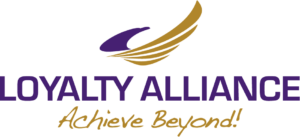

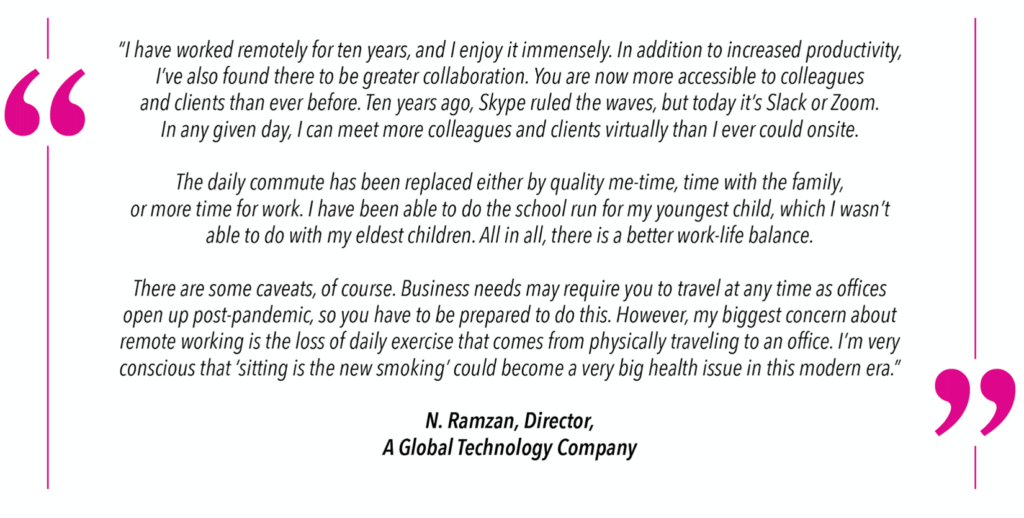

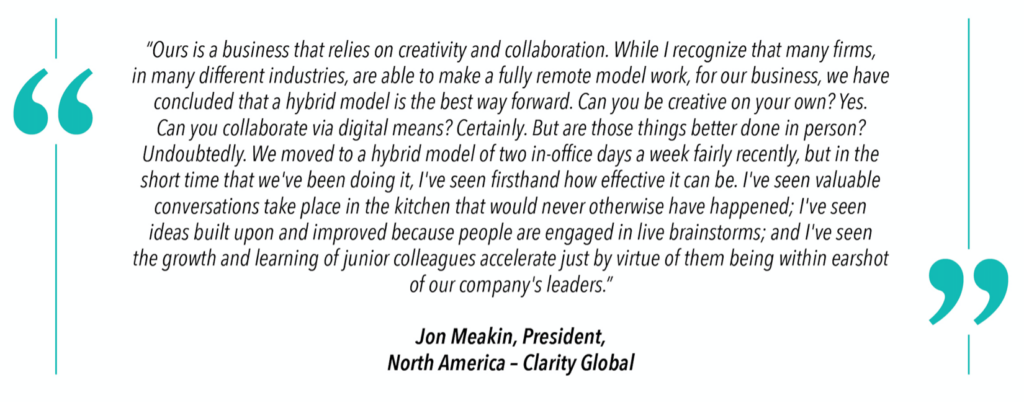
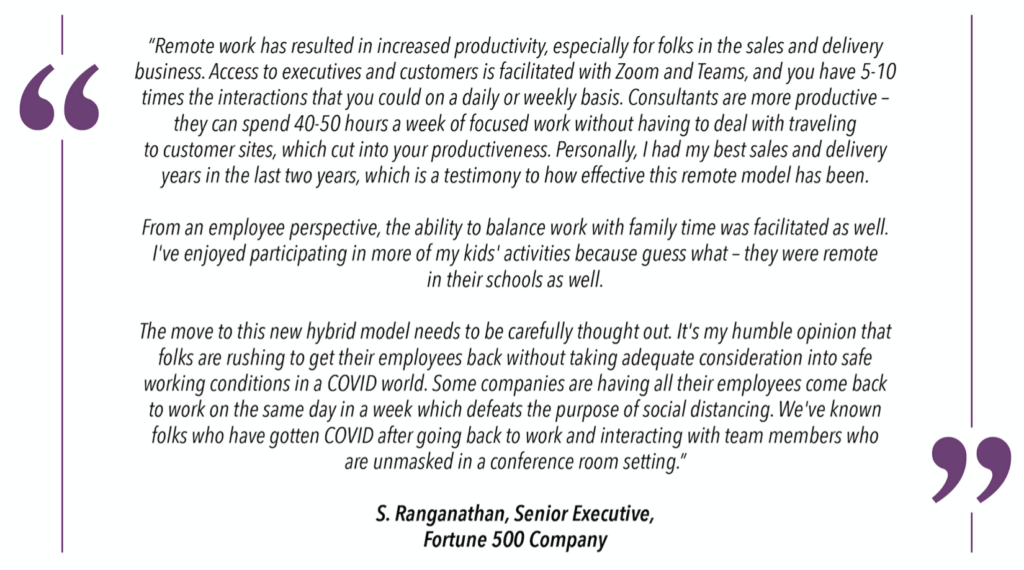

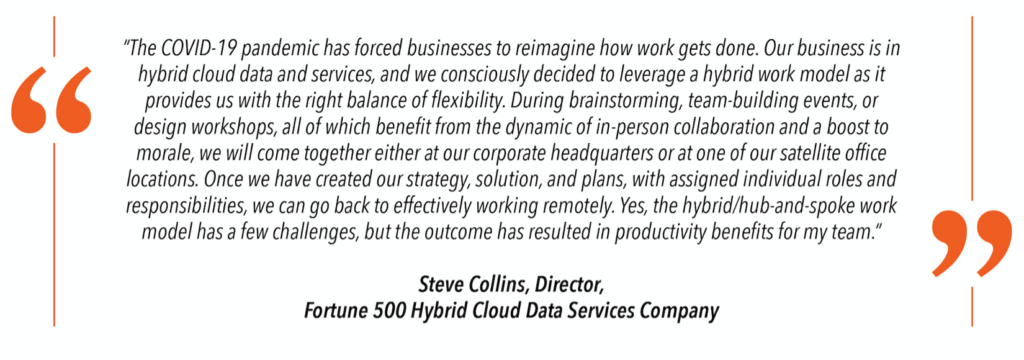
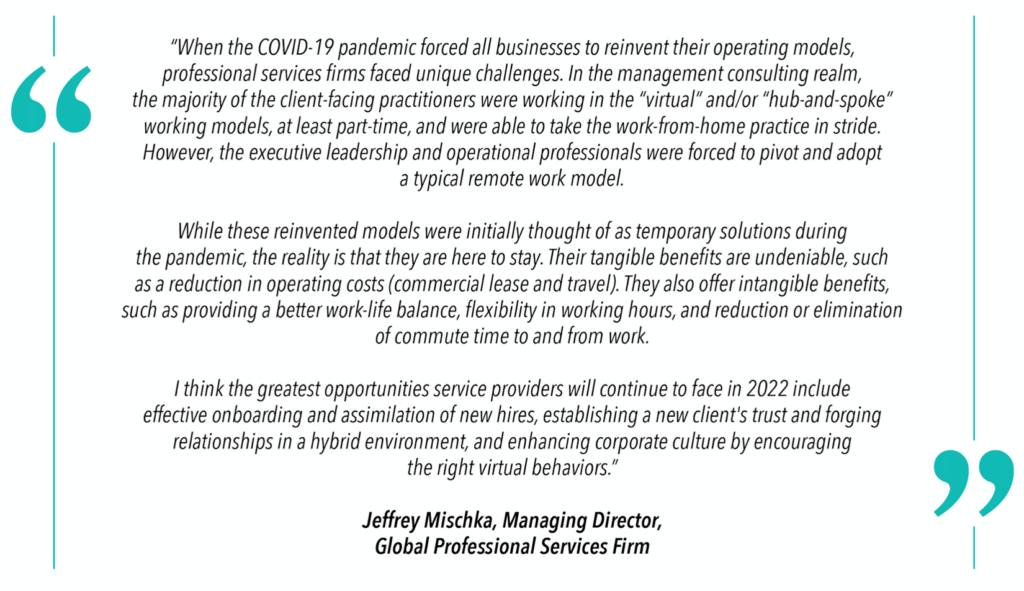
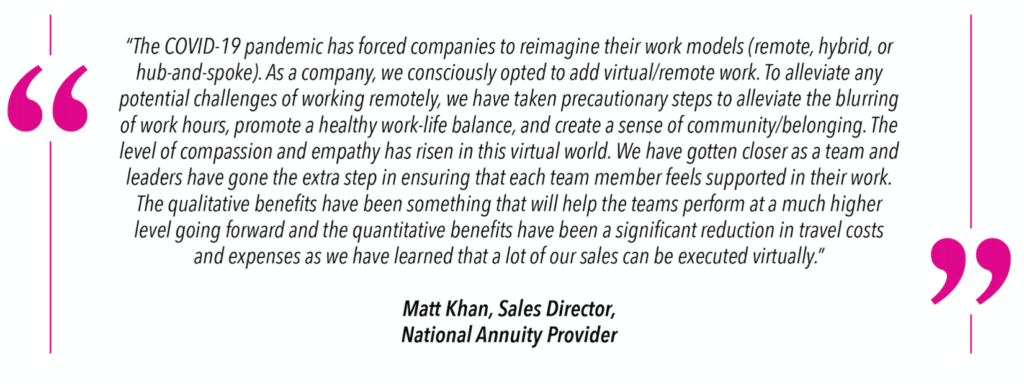
Sundar Pichai has been a significant piece of Google since the time he joined the organization in 2004. He was selected as Google President in the year 2015. According to media reports, Pichai procured a compensation of more than $1 billion (which is 100 crores in INR) consistently somewhere in the range of 2015 and 2020. Reports likewise propose that Pichai’s base compensation is $2 million (which is around Rs 20 lakh). Moreover, the Google Chief draws rewards and stock award.